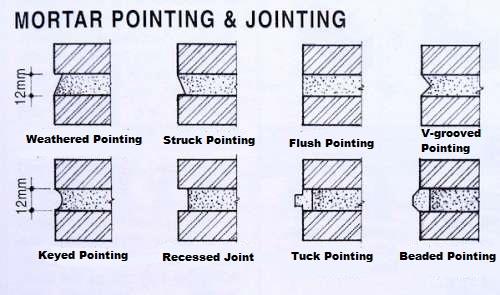There are many different types and styles brick pointing. Some are purely aesthetic, and some serve a practical service. Below are some examples of different styles of pointing for different restoration jobs.
Names of pointing styles differ so I’ve included Pictures along with various names for the different types of brick pointing and.
Tuck Pointing
Tuck pointing is a very common style of pointing on heritage buildings in Perth, often found in some of the older suburbs such as Fremantle, Northbridge, Subiaco and Nedlands. Originally tuck-pointing was used and a way to hide uneven joints caused by cheaper, non-gauged bricks that would be too expensive or unavailable in early settlement of Perth and Western Australia.
The style uses two mortars, the first hides the original joint by pointing almost flush with a brick coloured mortar. The second is a thin line usually a white or lighter colour. This is raised and applied along all joints and perps (vertical joints) in precise level lines to give the impression of uniform brickwork.
At K&S Restorations we always use lime mortar when tuck-pointing as would have been used in the original heritage brick buildings.
Cut, Weathered or Struck Pointing
Usually called struck pointing In Perth and WA, struck pointing is commonly found on heritage brickwork in western Australia, as it is most commonly found on older buildings it can often be weathered of fretted. When repointing any brickwork or stonework it is important to use the right mortar. As struck brick pointing is mainly found on heritage buildings it usually a lime-based mortar rather than cement.
Keyed, Beaded, concave, half round or bucket handle
This type of brick pointing is more commonly found in buildings built from the 1930’s onwards, the mason or bricklayer uses a concave pointing tool when the mortar is still wet to create a rounded effect.
Recessed or raked Joint
Commonly found on more modern buildings it is a simpler style of pointing and more commonly done in cement. The recces can often cause a water trap so even though it is a more modern style brick repair and mortar restoration is common.
Flush pointing
The simplest style of pointing, it is rarely found on heritage brick buildings.
V-grooved, ribbon and beaded pointing
these styles of pointing are all time consuming and require experience and knowledge of brick pointing and brick restoration, however they are rarely found in Perth or Western Australia

